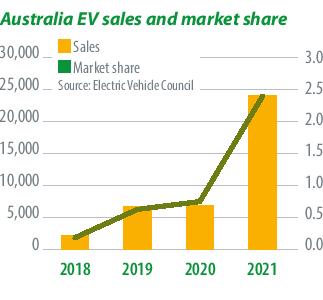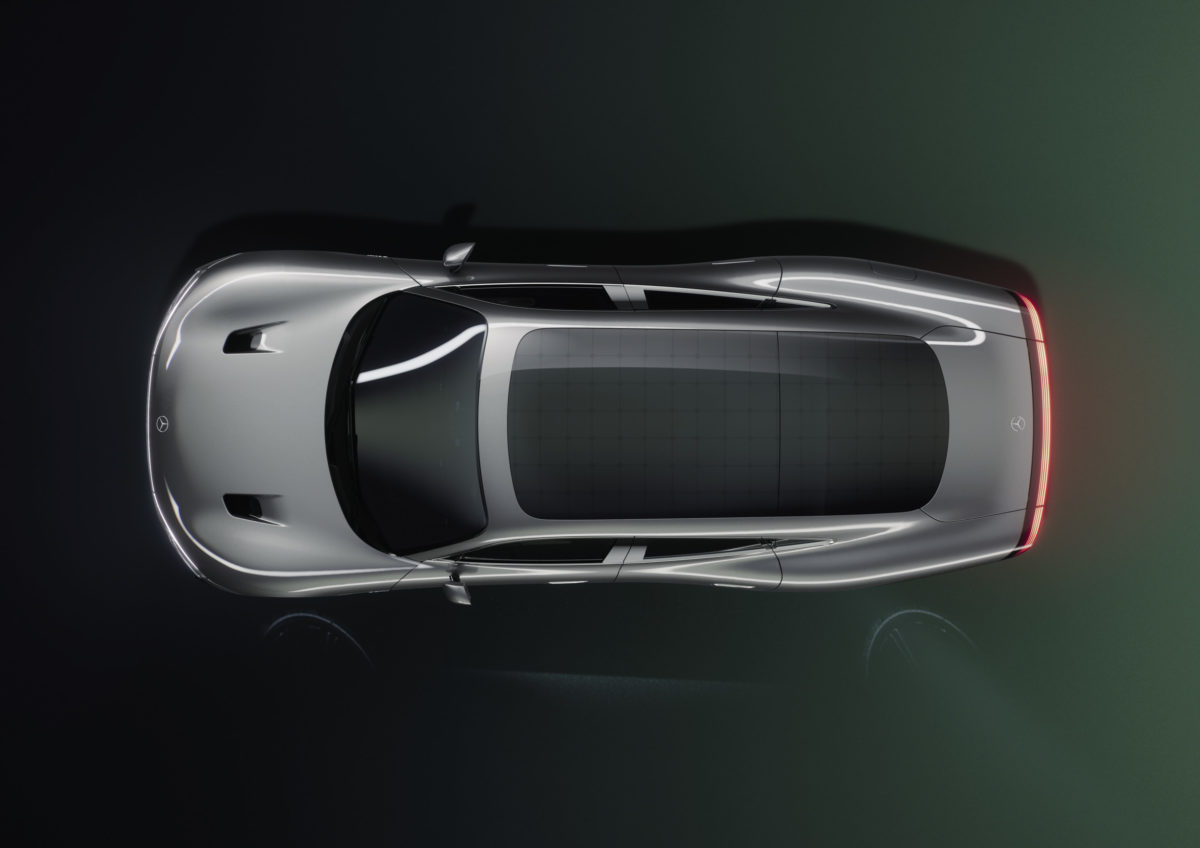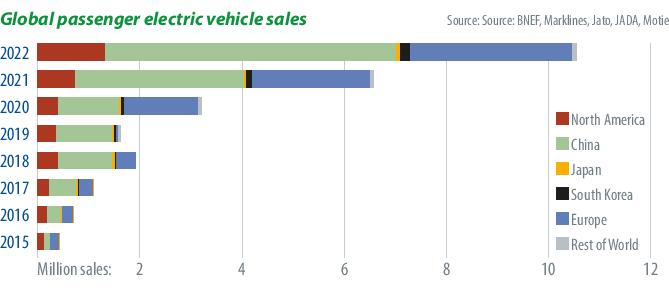While Vision EQXX is a concept car at this stage, production vehicles based on the platform are planned for release to drivers in 2024 – and the approach taken by the company marks a departure from “high speed, heavy luxury,” for which the brand may be best associated. In fact, its top speed of some 140 km/h may leave auto-enthusiasts underwhelmed. But the car represents a refocusing of priorities for Mercedes, with efficiency and range the goal, rather than high performance in terms of speed.
E-mobility: On a greener road to transportation
 Urban transportation is key to modern civilization. But it has come at a cost, contributing to a dangerous carbon footprint, high levels of smog, a growing inequality gap, and the destruction of some of our most fragile environments. Thus, in the first quarter of this year, pv magazine’s UP Initiative will focus on the rise of e-mobility and how it can complement the renewable energy transition. Read our coverage here.
Urban transportation is key to modern civilization. But it has come at a cost, contributing to a dangerous carbon footprint, high levels of smog, a growing inequality gap, and the destruction of some of our most fragile environments. Thus, in the first quarter of this year, pv magazine’s UP Initiative will focus on the rise of e-mobility and how it can complement the renewable energy transition. Read our coverage here.While a lightweight battery, aerodynamics, intelligent software, and battery-to-wheels efficiency of 95% delivers the claimed range, the attention of the solar industry was captured by the Vision EQXX’s deployment of a solar roof. Developed in collaboration with the Fraunhofer Institute for Solar Energy Systems (ISE), the Vision EQXX has an “ultra-thin” solar roof, which includes 117 crystalline silicon solar cells.
The solar roof is hardly a game-changer when it comes to the range, chipping in up to 25 km of extension under the right conditions. It is not integrated into the car’s electric drive train, instead feeding lithium-iron-phosphate batteries to power the climate-control system, infotainment and other auxiliaries – although the company says that it is working toward “using solar power to charge the high-voltage system.”
The concept car will not reinvent EVs in terms of their deployment of solar; charging from the grid will remain the reality for many years to come. But the move by Mercedes sends a strong signal, and is attracting wide interest. As electric mobility becomes mainstream, so too will PV play an important role in powering that future. Furthermore, solar cells now shift further toward being a key attribute of a luxury, high-tech brand.
Nothing new
While the Vision EQXX is the latest and most high-profile example, integrating solar into mobility has a heritage that is longer than many might be aware of. In 1989, Webasto – a roofing supplier to the auto industry – delivered its first solar roof to Audi for the 80 Coupé.
“Webasto is a pioneer for solar roofs in vehicles,” said Rupert Kogler, the solar expert for the development of glazing, roof and components at the company. “We have been consistently using the technology for 33 years. With electrification and sustainability as global mega-trends, interest in solar roofs is also on the rise.”
Pointing to increases in solar cell efficiency, Kogler noted that “the solar roof in the car makes a positive contribution to the CO2 balance and pays for itself in less than five years.”
At present, Webasto uses high-efficiency, large-format M12 solar cells for its solar roofs, with efficiency at the cell level “of around 23%.” And while the power output from a solar roof is far short of what is required to power any conventional EV’s drive train, by reducing battery drain from things like the air conditioning or heating, range can be extended and the driving experience enhanced. “We don’t always have to think in terms of range; increasing comfort by lowering the interior temperature is also possible with solar energy, without putting a strain on the battery,” said Kogler.

Startups jostle for position
Solar electric vehicles (SEV) remain in the nascent stage of development. And while solar sunroofs such as those pioneered by Webasto represent the round one of SEV progress, or vehicle-integrated photovoltaics (VIPV), the next phase will require PV cells to cover a much larger portion of the vehicle’s surface – with much larger complications.
The draw of an electric vehicle able to charge itself, relieving some of the range anxiety and grid-resilience concerns common to EVs, is already proving strong. Players from both the solar and automotive industries are working on bringing VIPV to market. Germany’s Sono Motors has developed a process to integrate silicon solar cells into vehicle body panels during their manufacture by injection molding, and plans to begin production of a family-sized car, the Sion, in 2023. Meanwhile, Dutch startup Lightyear has integrated 5 m² of solar cells onto the roof and hood of its Lightyear One vehicle.
Both startups are taking preorders for their solar electric vehicles already, with the first Lightyear One vehicles expected to be delivered this northern hemisphere summer, and the Sion, priced at €28,500, in 2023. A pre-order of the Lightyear One currently costs €150,000, though the company says it also plans to launch a “mass market model” priced around €30,000 by 2024-25.
As new designs emerge, there are many possible directions the technology could take. “As cell efficiencies improve, conditions for VIPV will only get better, and we believe it will take off,” said Christoph Kutter, scientist for PV module design and vehicle-integrated photovoltaics at Fraunhofer ISE. “But the technical challenges are also there.”
With no way around space limitations, VIPV will naturally favor the highest possible cell efficiencies. However, many of the most efficient cells available come at a high cost, and it is not yet clear how the economics will play out as the market develops. Drivers may be willing to pay more for a solution that offers greater independence from the grid and charging infrastructure – to a point.
Sono Motors and Lightyear are both working with interdigitated back contact cells for their VIPV, and expect initial module efficiencies of around 21% in production. “In combination with conductive back sheet technology, these IBC cells allow for a flexible string design and deliver both a high energy yield and solid, uniform aesthetics,” said Arjo van der Ham, the chief technology officer at Lightyear.
Sono estimates that 248 cells integrated into the vehicle body will add on average 112 km per week to the vehicle’s driving range, and that it can achieve an LCOE of €0.12/kWh, based on the climate in Munich, Germany.
In 2019, Toyota teamed up with Sharp and Japanese research institute NEDO to demonstrate a version of Toyota’s popular Prius, integrated with 34%-efficient triple junction III/V cells. According to Toyota, this allowed it to fit 860W of PV capacity on just the roof and hood of the car, and could extend the vehicle’s range by more than 50 km a day. However, the cost of these cells would likely make the energy far more expensive than using a public charge point.
Other emerging high-efficiency cell technologies will make VIPV even more attractive. Perovskite-silicon tandem cells promise the next big jump in efficiency, potentially beyond 28%, though this technology still has its own set of challenges. Lightyear says that it is continuously evaluating new and more efficient cells to increase the “solar kilometers” that can be traveled, and also focusing on power electronics to minimize mismatch and cell to module losses.
Behind the curve
To maximize solar generation, VIPV solutions need to address the curved surfaces of a vehicle body in passenger cars. For commercial vehicles there is also a need to develop reliable, lightweight (glass-free) module technology that is both durable and doesn’t compromise the storage capacity of the vehicle. And these challenges all begin at the manufacturing stage.
“PV factories are designed for similar products, to have the same thing running through the line 24/7. When you have to consider different products, different shapes and so on, you need some flexibility,” explained Kutter, noting that many of the tools on a PV production line would require a significant redesign to handle different shaped devices, and that the lamination would be a particular challenge. Fraunhofer ISE is working with laminator manufacturer Robert Bürkle GmbH on a solution for this, in a project titled “3D” that aims to develop a laminator able to handle different curved module dimensions.
Further, Kutter noted that shingled cell interconnection – where cells are slightly overlapped and attached to each other directly rather than using a wire – also has strong potential for VIPV applications, and could be adapted to work on a curved surface. He added that the non-uniform surface of a vehicle creates electrical as well as physical challenges, and that shingled cells could also have an advantage here.
“The curvature introduces complexity, which causes inhomogeneous irradiation and current production, because there are different orientations,” said Kutter. “With shingling you can compensate for that quite well, and also you can get good tolerance for partial shading.”
The sleek new designs in the latest SEVs have captured the imagination of an increasingly EV-curious public.
“Our mission is ‘solar on every vehicle’ and we therefore believe in a future where solar is integrated onto different kinds of mobility solutions,” said Mathieu Baudrit, group lead for solar at Sono Motors. “Since the beginning of last year we have been expanding our technology and VIPV knowledge to other companies in transportation and have already signed over 10 contracts with companies such as MAN, easymile or ARI Motors. We are working in collaboration with our customers and partners on prototypes and projects for solar integration on trucks, trailers, campers, vans and even boats.”
This content is protected by copyright and may not be reused. If you want to cooperate with us and would like to reuse some of our content, please contact: editors@pv-magazine.com.



